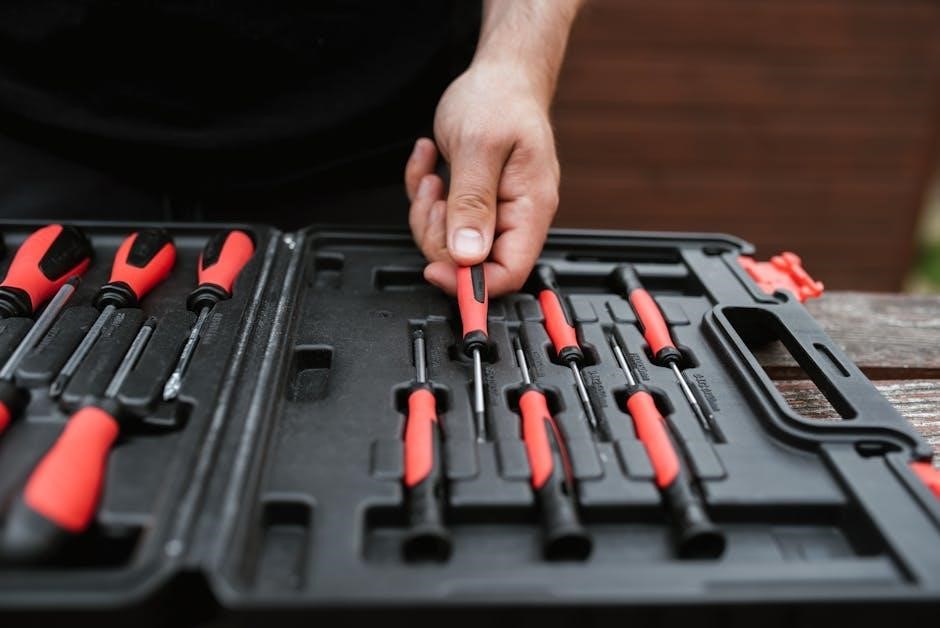Manually operated pilot devices, such as pushbuttons and selector switches, enable control of machinery through physical interaction. They actuate mechanisms to initiate or modify system operations safely and efficiently.
1.1 Definition and Purpose
Manually operated pilot devices are control mechanisms that enable users to interface directly with machinery or systems. These devices, such as pushbuttons or selector switches, actuate specific functions through physical interaction. Their primary purpose is to provide a reliable and intuitive means of controlling mechanical or electrical systems. By translating manual inputs into operational commands, they ensure precise and safe system management. The simplicity of their design makes them indispensable in industrial automation, robotics, and other applications where human intervention is required. Their role is to bridge the gap between human intent and machine operation, ensuring efficiency and accuracy in various operational environments.
1.2 Historical Background
Manually operated pilot devices trace their origins to early mechanical systems, where levers and switches were used to control machinery. Over time, these devices evolved with advancements in industrial automation, incorporating pushbuttons and selector switches. The development of pneumatic systems further expanded their applications, with manufacturers like AutomationDirect introducing pilot devices for valve control. Historically, these devices relied on mechanical linkages and actuators to translate user inputs into system actions. Their design has been refined to enhance reliability and safety, particularly in critical environments such as aerospace and robotics. This historical progression highlights the essential role of manual operation in system control, ensuring precise and intuitive interaction between humans and machines.
1.3 Importance in Industrial Automation
Manually operated pilot devices are integral to industrial automation, providing a direct interface for operators to control machinery and processes. These devices, such as pushbuttons and selector switches, enable precise and intuitive interaction, ensuring safe and efficient operation. Their role in initiating, stopping, or modifying system functions is critical, particularly in applications requiring immediate human intervention. Additionally, emergency stop devices are vital for halting operations to prevent accidents or damage. The simplicity and reliability of these manual controls make them indispensable in industries where human oversight and quick response are essential. Their integration with pneumatic and automated systems further enhances their significance in modern manufacturing environments.
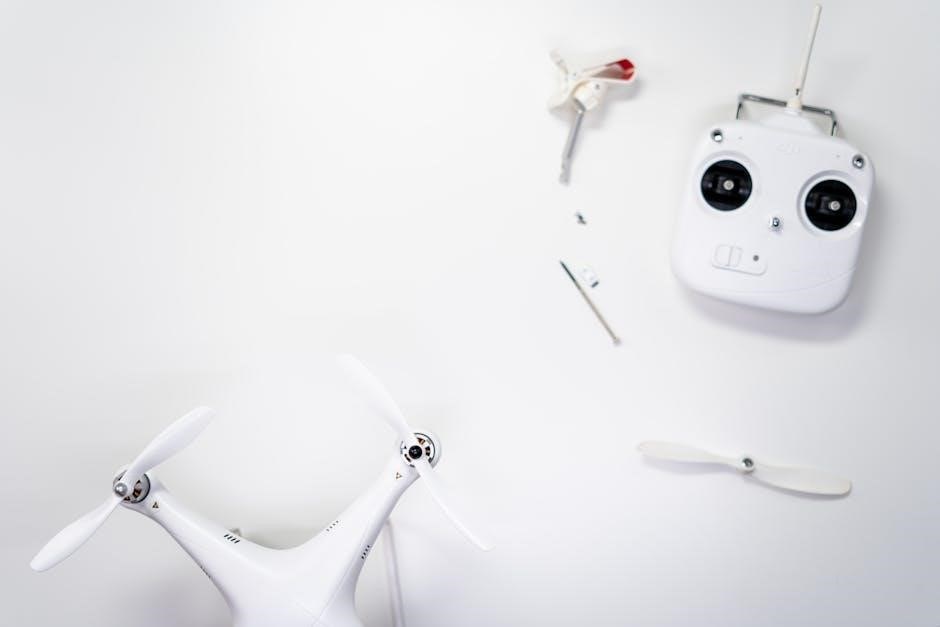
Types of Manually Operated Pilot Devices
Common types include pushbuttons, selector switches, indicating lights, and emergency stop devices. Each serves distinct functions, from initiating actions to providing visual feedback or ensuring safety in operations.
2.1 Pushbuttons
Pushbuttons are control devices used to manually close and open a set of contacts. They are available with various operator designs and are commonly used to start or stop machinery. These devices provide a simple and intuitive way for operators to interact with systems. Pushbuttons can be illuminated to indicate their status, enhancing user experience. They are essential components in industrial automation, robotics, and medical devices, ensuring precise control over operations. Their durability and ease of use make them a preferred choice in many applications.
2.2 Selector Switches
Selector switches are manually operated devices used to control the flow of electrical currents in a circuit. They allow operators to choose between different settings or positions, enabling precise control over machinery and processes. These switches are commonly used in industrial automation, aerospace, and robotics to manage various operational modes. Selector switches can have multiple positions, such as two-position or three-position configurations, making them versatile for different applications. Their robust design ensures durability and reliability in demanding environments. By providing a clear and intuitive interface, selector switches play a crucial role in ensuring safe and efficient system operation across various industries.
2.3 Indicating Lights
Indicating lights are essential components of manually operated pilot devices, serving as visual indicators to provide real-time feedback on system status. These lights are integrated into control panels and operate by illuminating specific colors to signal different states, such as power on, system active, or error conditions. They enhance operator awareness and decision-making by offering clear visual cues. Indicating lights are commonly used in conjunction with pushbuttons and selector switches to ensure seamless communication between the operator and the machine. Their simplicity and reliability make them indispensable in various industrial and automation applications, ensuring efficient and safe operation.
2.4 Emergency Stop Devices
Emergency stop devices are critical components of manually operated pilot devices, designed to immediately halt machinery or processes in urgent situations. These devices are typically easy to activate, with features like push-pull or twist-to-release mechanisms, ensuring rapid response. They are essential for preventing accidents and protecting personnel. Emergency stop devices are commonly integrated into control panels and are often brightly colored for quick identification. Compliance with international safety standards, such as ISO 13850, ensures their reliability and effectiveness. Their primary role is to provide a failsafe mechanism, making them indispensable in industrial automation and hazardous environments where human safety is paramount. Regular testing is required to maintain their functionality.

Working Principles of Manually Operated Pilot Devices
Manually operated pilot devices function through mechanical or electrical activation, translating physical inputs into control signals for machinery or systems, ensuring reliable and consistent operation.
3.1 Mechanical Linkages
Mechanical linkages in manually operated pilot devices transfer physical motion from the operator to the device, enabling precise control. These linkages, such as levers, gears, or cams, convert manual force into mechanical motion. They ensure smooth actuation by maintaining alignment and reducing friction. Proper lubrication and alignment are critical to prevent wear and ensure reliable operation. Mechanical linkages are designed to amplify or redirect force, depending on the application, making them essential for accurate and efficient control in industrial and automation systems. Their simplicity and durability make them a cornerstone of manually operated pilot devices, ensuring consistent performance across various environments.
3.2 Actuators and Their Role
Actuators play a pivotal role in manually operated pilot devices by converting physical input into controlled mechanical or electrical output. These components are responsible for initiating actions such as switching, pressing, or toggling within the device. Actuators ensure precise and reliable operation by translating manual force into the desired motion. In pushbuttons, for instance, the actuator triggers contact closure, enabling signal transmission. Similarly, in selector switches, actuators facilitate position changes, directing electrical paths. Their responsiveness and durability are critical for maintaining consistent performance in industrial and automation environments. Actuators are integral to the functionality of manually operated pilot devices, ensuring smooth and accurate control across various applications.
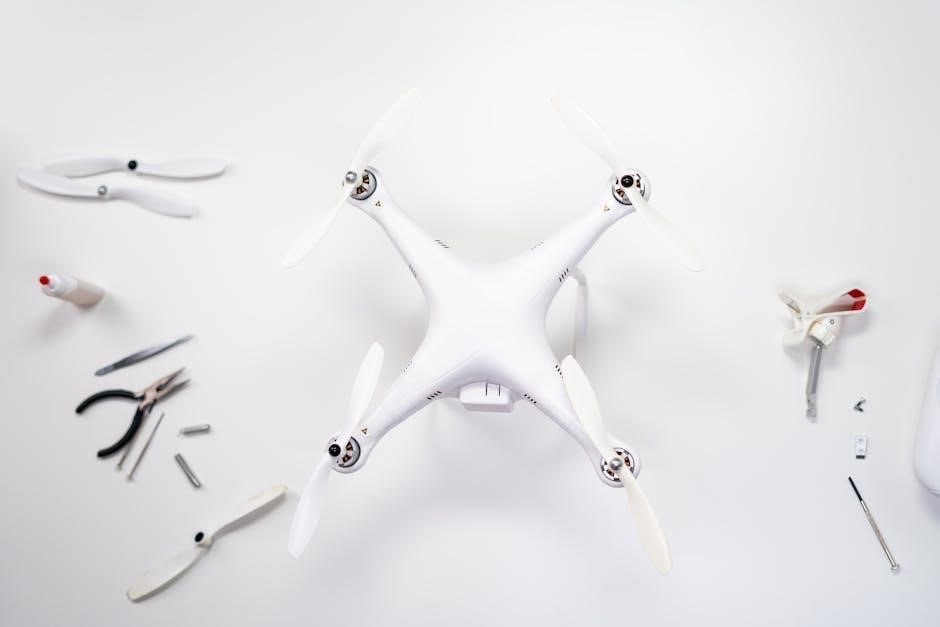
Applications of Manually Operated Pilot Devices
Manually operated pilot devices are widely used in industrial automation, aerospace, and robotics for precise control and safe operation of machinery and systems, ensuring reliability and efficiency.
4.1 Industrial Automation
In industrial automation, manually operated pilot devices play a crucial role in controlling and monitoring machinery. They enable operators to initiate, stop, or adjust processes safely and efficiently. Pushbuttons, selector switches, and indicating lights are commonly used to control motor starters, valves, and other equipment. These devices provide a reliable interface for human-machine interaction, ensuring precise command execution. Emergency stop devices are essential for halting operations in critical situations, preventing accidents and equipment damage. Their durability and ease of integration make them indispensable in automation systems, ensuring smooth operations across various industries.
Regular maintenance of these devices is vital to uphold system performance and safety standards.
4.2 Aerospace Engineering
In aerospace engineering, manually operated pilot devices are integral to cockpit controls, enabling pilots to manage aircraft systems efficiently. Pushbuttons, switches, and indicators are used to control navigation, communication, and engine systems. These devices must meet stringent reliability and durability standards due to the harsh operating conditions in aviation. Emergency stop mechanisms are crucial for shutting down systems in critical situations. The use of these devices ensures precise control and safety in aircraft operations, making them indispensable in modern aerospace applications. Their role in maintaining flight safety and operational efficiency cannot be overstated.
These components are meticulously tested to withstand extreme environmental conditions.
4.3 Robotics and Medical Devices
In robotics, manually operated pilot devices play a crucial role in controlling robotic movements and functions. These devices, such as joysticks or control panels, enable operators to program and maneuver robots with precision. They are widely used in industrial automation for tasks like welding, assembly, and material handling. Similarly, in medical devices, manually operated pilot devices are essential for controlling equipment like surgical robots or patient monitors. These devices ensure accurate and reliable operation, which is critical in healthcare settings. Their integration into robotic and medical systems enhances operational efficiency and safety, making them indispensable in these fields.
Their use in robotics and medicine underscores their versatility and importance in modern technology.
Safety Considerations
Safety considerations for manually operated pilot devices are critical to ensure reliable operation and protect systems from potential hazards, emphasizing safe functionality and regulatory compliance.
5.1 Emergency Stop Functions
Emergency stop functions are critical safety features in manually operated pilot devices, designed to immediately halt machinery or processes in urgent situations. These devices, often red and easily accessible, ensure quick response to prevent accidents. They typically interrupt power supply or trigger safety protocols, providing a reliable failsafe mechanism. Compliance with safety standards like IEC 60204-1 is essential for their design and installation. Regular testing and maintenance are required to ensure functionality. Failure to implement proper emergency stop mechanisms can lead to severe injuries or equipment damage, emphasizing their importance in industrial automation and operator safety. Their effectiveness relies on rapid activation and system response.
5.2 Fail-Safe Mechanisms
Fail-safe mechanisms in manually operated pilot devices ensure systems default to a safe state during malfunctions. These mechanisms are designed to prevent accidents by automatically triggering safety protocols when a failure occurs. For instance, spring-return actuators revert to their default position if power is lost, ensuring machinery shuts down safely. Redundant circuits and self-monitoring features also enhance reliability. Energy-dissipating components, like brakes, are often integrated to maintain control during failures. Compliance with international safety standards, such as ISO 13849, is crucial for designing fail-safe systems. These mechanisms are essential for maintaining operator safety and preventing unintended operations in industrial automation environments. Regular testing ensures their effectiveness.
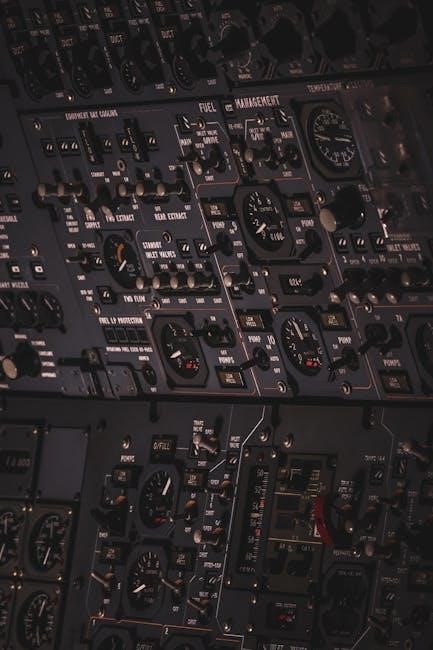
Integration with Automation Systems
Manually operated pilot devices integrate seamlessly with automation systems through communication protocols like Modbus and Profinet, enabling real-time control and monitoring within PLC and SCADA environments.
6.1 PLC Integration
Manually operated pilot devices seamlessly integrate with Programmable Logic Controllers (PLCs) through digital or analog signals, enabling precise control of industrial processes. These devices actuate by sending electrical signals to PLCs, which process inputs and execute predefined commands. The integration allows for real-time monitoring, ensuring efficient operation and quick response to system changes. Safety features, like emergency stop devices, can be directly linked to PLCs to halt operations immediately. Diagnostic capabilities enable troubleshooting of faulty pilot devices, enhancing system reliability. This integration is crucial for automating complex industrial tasks, ensuring synchronization between manual inputs and automated responses.
6.2 IoT Connectivity
Manually operated pilot devices can be enhanced with IoT connectivity, enabling remote monitoring and control through cloud-based platforms. Sensors embedded in these devices transmit real-time data, such as operational status or usage patterns, to IoT gateways or directly to the cloud. This connectivity allows operators to access and control pilot devices via smartphones or computers, ensuring flexibility and efficiency. Predictive maintenance is also facilitated, as IoT systems can detect anomalies or wear, preventing unexpected failures. Enhanced security features, such as encryption and secure authentication, safeguard data integrity. IoT connectivity bridges manual operation with smart automation, optimizing industrial processes and enabling seamless integration with modern control systems.

Advantages of Manually Operated Pilot Devices
Manually operated pilot devices provide reliability, ease of use, and durability, ensuring consistent performance in industrial settings. Their simple design reduces reliance on complex automation, enhancing control.
7.1 Simplicity in Design
Manually operated pilot devices are characterized by their straightforward construction, minimizing complexity and ensuring ease of operation. Their simple design reduces the number of components, lowering the likelihood of mechanical failure. This simplicity also makes them intuitive to use, requiring minimal training for operators. Additionally, the lack of intricate electronics or software reduces the risk of malfunctions, ensuring reliable performance in demanding environments. The ease of installation and maintenance further enhances their appeal, as they often require basic tools and minimal downtime for repairs. This straightforward design approach makes them a cost-effective and practical solution for various industrial applications, prioritizing functionality over complexity.
7.2 Cost-Effectiveness
Manually operated pilot devices are highly cost-effective, offering significant savings in both initial investment and long-term maintenance. Their simple design reduces production costs, while their durability minimizes the need for frequent replacements; Energy consumption is also lower, as they often rely on mechanical rather than electrical operation. Additionally, these devices require less complex installation processes, further reducing expenses. Their longevity and resistance to wear and tear contribute to overall cost savings. Compared to automated alternatives, manually operated pilot devices provide a budget-friendly solution without compromising functionality. This makes them an economical choice for industries seeking reliable control systems. Their affordability enhances their appeal across various applications.
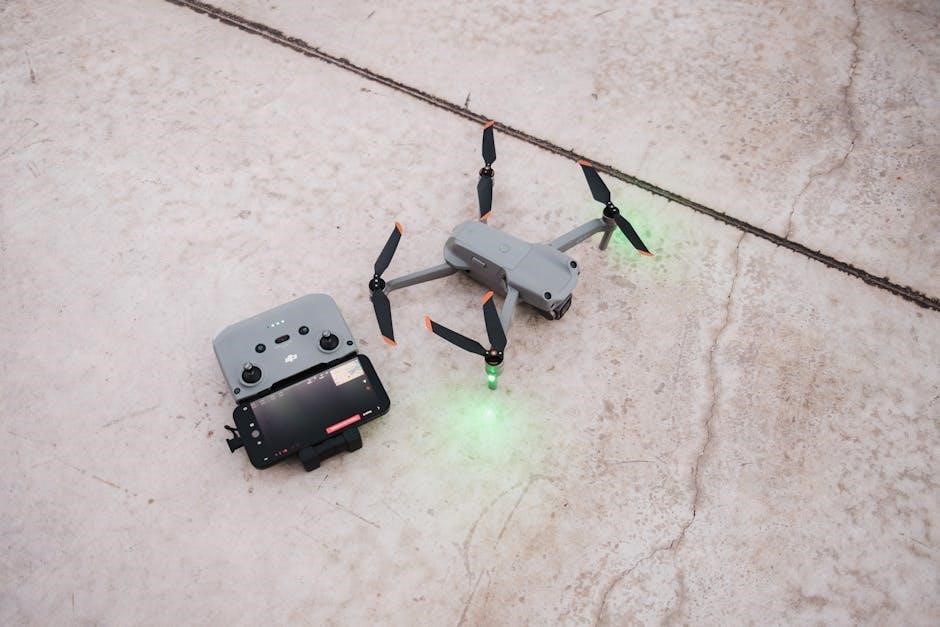
Challenges and Limitations
Manually operated pilot devices face challenges like mechanical wear, compatibility issues with modern systems, and limited scalability for complex applications, requiring careful selection and maintenance.
8.1 Limited Precision
Manually operated pilot devices often lack the precision achievable with automated systems. Mechanical components can experience wear, leading to imprecise control signals. Operator variability further compounds this issue, as human input may introduce inaccuracies. Additionally, these devices may struggle to maintain consistent settings over time due to environmental factors or mechanical degradation. In applications requiring high accuracy, such limitations can be significant, potentially affecting the overall performance of connected systems. Regular maintenance and calibration are essential to mitigate these challenges, ensuring reliable operation within acceptable tolerance levels. Despite these efforts, manual systems generally cannot match the precision of advanced automated alternatives.
8.2 Environmental Factors
Environmental factors significantly impact the performance of manually operated pilot devices. Extreme temperatures can cause mechanical components to expand or contract, leading to misalignment or failure. High humidity may result in corrosion or electrical issues, while dust and contaminants can interfere with moving parts. In hazardous environments, exposure to chemicals or vibrations can degrade device reliability. Additionally, outdoor installations may face weather-related challenges, such as UV degradation or icing. To combat these issues, manufacturers often design devices with protective enclosures or corrosion-resistant materials. Regular maintenance is crucial to ensure longevity and reliability in harsh conditions, maintaining operational safety and efficiency across various industrial applications.
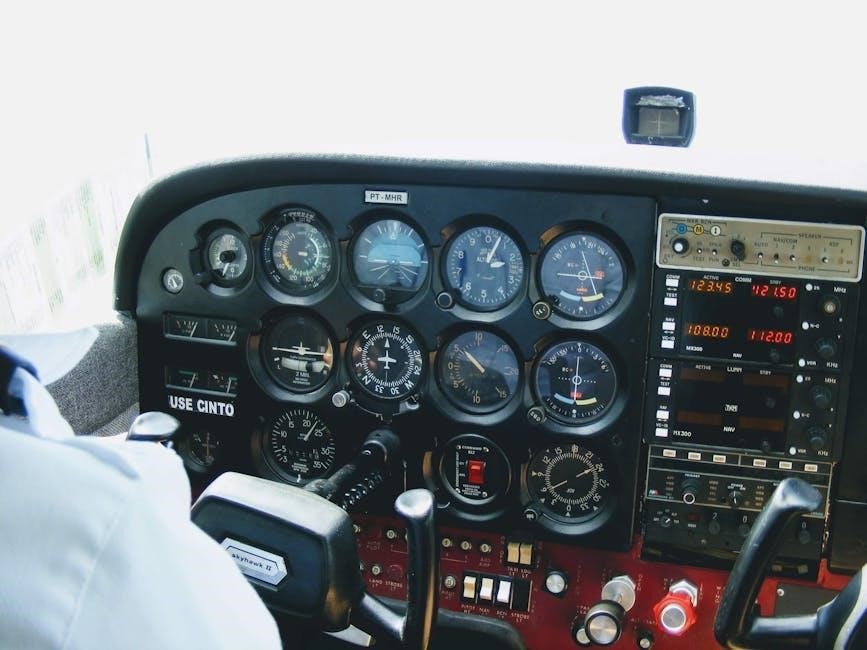
Maintenance and Troubleshooting
Regular cleaning and lubrication of moving parts ensure smooth operation. Inspecting electrical connections and testing functionality under load help identify potential failures early, preventing downtime and ensuring safety.
9.1 Regular Inspection
Regular inspection of manually operated pilot devices is crucial for ensuring reliable performance and safety. Visual checks for wear, tear, or damage to buttons, switches, and indicators should be performed periodically. Electrical connections must be verified for tightness and integrity to prevent signal interruptions. Cleaning the devices to remove dirt or debris ensures proper actuation and prevents malfunctions. Testing the functionality under various operating conditions helps identify potential issues early. Inspection schedules should align with manufacturer recommendations and environmental factors. Consistent monitoring ensures the devices operate as intended, maintaining system efficiency and operator safety. Early detection of issues prevents unexpected failures, ensuring continuous production and reducing downtime risks.
9.2 Replacement of Worn Components
Replacing worn components in manually operated pilot devices is essential to maintain their functionality and dependability. Identifying worn parts, such as buttons, contacts, or springs, is critical during inspections. Replacing these components with genuine or compatible parts ensures consistent performance. Proper tools and techniques should be used to avoid damaging the device or its connections. After replacement, thorough testing is necessary to confirm the device operates correctly. Timely replacement prevents sudden failures, ensuring uninterrupted system operation. Keeping spare parts on hand can minimize downtime during maintenance. Adhering to manufacturer guidelines ensures the replacement process is safe and effective, preserving the device’s longevity and reliability.
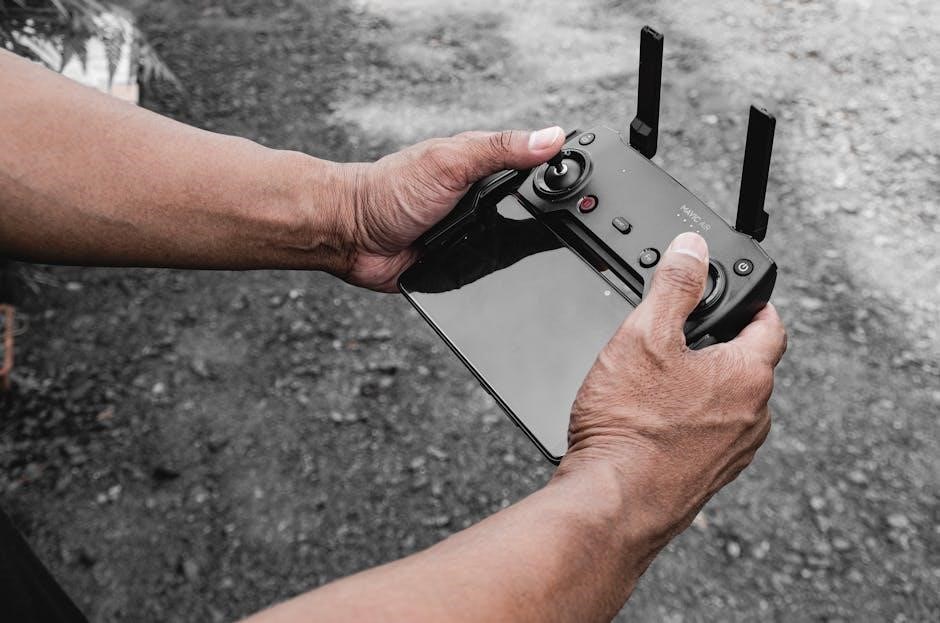
Future Trends
Future trends include integrating manually operated pilot devices with IoT for enhanced connectivity and real-time monitoring, aligning with Industry 4.0 standards for smarter automation and predictive maintenance.
10.1 Smart Pilot Devices
Smart pilot devices are revolutionizing manual operation with advanced IoT integration, enabling real-time monitoring and remote control. These devices incorporate AI-driven analytics for predictive maintenance and optimized performance. Energy-efficient designs reduce power consumption, while wireless connectivity enhances flexibility in industrial setups. Enhanced safety features, such as automated alerts for malfunction detection, are being prioritized. The integration of touchscreens and wearable interfaces improves user interaction. These innovations align with Industry 4.0 standards, offering seamless communication between devices and control systems. Smart pilot devices are set to redefine automation by combining reliability with cutting-edge technology, ensuring higher efficiency and reduced downtime in industrial applications.
10.2 Miniaturization of Components
The miniaturization of manually operated pilot devices is a growing trend, driven by advancements in technology and the demand for compact systems. Smaller components enable space-saving designs, reducing the overall size of control panels while maintaining functionality. This trend is particularly beneficial in industries with limited installation spaces, such as aerospace and robotics. Miniaturized devices also lower material costs and improve portability. However, smaller components must still meet rigorous performance and reliability standards. Manufacturers are leveraging advanced materials and precision engineering to achieve this balance. Miniaturization is expected to play a key role in the development of next-generation pilot devices, enhancing efficiency and versatility across applications.
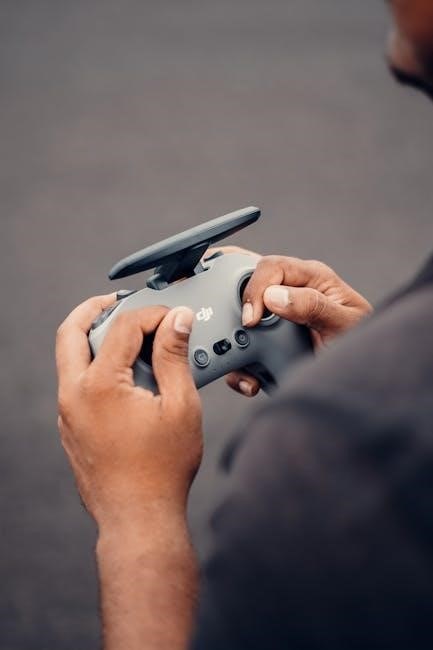
Suppliers and Manufacturers
Leading manufacturers specialize in producing high-quality manually operated pilot devices, ensuring reliability and durability for industrial applications.
11.1 Regional Suppliers
Regional suppliers specialize in providing manually operated pilot devices tailored to local market needs, ensuring quick delivery and compliance with regional standards. In North America, companies like Eaton and Schneider Electric offer a wide range of pilot devices. In Europe, manufacturers such as EATON and Finder prioritize energy efficiency and durability. Asian markets are served by suppliers like Omron and Panasonic, known for innovative designs and cost-effective solutions. These regional suppliers often collaborate with local industries to customize products, ensuring seamless integration into specific applications while maintaining global quality standards. Their proximity to customers enables faster technical support and after-sales services, enhancing overall customer satisfaction and loyalty.
11.2 Global Manufacturers
Global manufacturers like Siemens, Allen-Bradley, and General Electric lead the production of manually operated pilot devices, ensuring high-quality and innovative solutions. These companies leverage advanced technologies to meet the diverse needs of industries worldwide. Their extensive product portfolios include pushbuttons, selector switches, and emergency stop devices, designed to adhere to international standards. With a strong global presence, they provide reliable products and excellent customer support, making them preferred choices for industrial automation and control systems across various sectors. Their commitment to innovation and quality ensures they remain at the forefront of the industry, continually meeting the evolving demands of the market.



